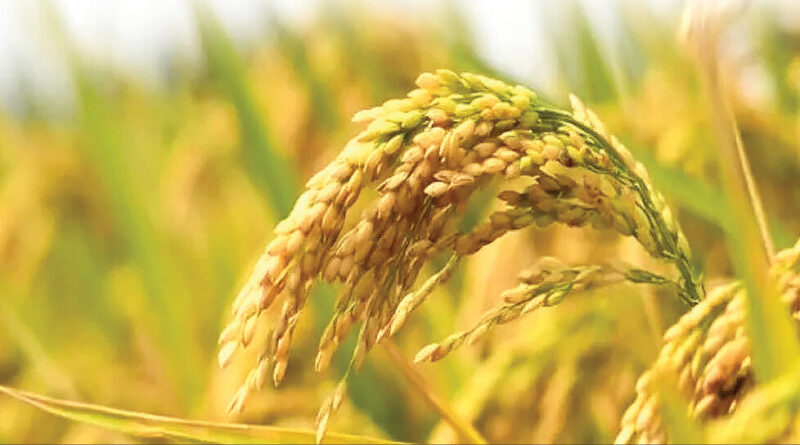Uneven monsoon rain in paddy growing areas of Punjab & Haryana
By Neelkamal
Both Punjab and Haryana might have recorded normal rainfall so far this monsoon season (June-September), but it has been uneven in the main paddy-growing districts.
After the paddy transplantation in both states was over, the major paddy-growing districts of Sangrur, Muktsar, and Bathinda in Punjab recorded deficient rain, while Amritsar, Jalandhar, Mansa, and Patiala recorded normal rainfall. Ferozepur, Gurdaspur, Ludhiana, Moga, and Tarn Taran recorded excess rainfall, with Tarn Taran recording a large excess.
Punjab witnessed paddy transplantation in an all-time high 32.46 lakh hectares, up from 32.43 lakh hectares in the previous year. Out of 32.46 lakh hectares, basmati was transplanted in 6.80 lakh hectares. Under the direct seeding of rice (DSR), paddy was transplanted in 2.94 lakh hectares, up from 2.53 lakh hectares in 2024.
In Haryana, Ambala, Karnal, Kaithal, and Jind recorded deficient rainfall, while Fatehabad, Panipat, Sonepat, and Sirsa recorded normal rain. Kurukshetra and Hisar recorded excess rainfall.
Punjab recorded 4% deficient rainfall from June 1 to Aug 17, as it registered 297 mm of rainfall during the period against the normal 310.5 mm. Haryana recorded 13% excess rainfall between June 1 and August 17. The state recorded 329.5 mm of rainfall during the period against the normal 290.9 mm. The normal range is recorded when rainfall is 19% to +19%.
Sangrur, Bathinda, Muktsar, Moga, Patiala, Ludhiana, Ferozepur, Amritsar, Tarn Taran, Jalandhar, and Gurdaspur are major paddy transplanting districts in Punjab, while Ambala, Kurukshetra, Karnal, Kaithal, Fatehabad, Hisar, Jind, Panipat, Sonepat, and Sirsa are major paddy transplanting districts in Haryana.
Sangrur, one of the largest paddy-cultivating districts, recorded 36% deficient rainfall in Punjab, followed by Muktsar, where 32% deficient rainfall was registered.
Bathinda got 20% deficient rainfall, while Mansa and Patiala recorded 18% deficient rainfall each. Tarn Taran recorded 82% excess rainfall. At 70%, Kapurthala recorded large deficient rainfall.
Overall, in Punjab, one district recorded large excess rain, six excess, eight normal, while six other districts recorded deficient rain. One district recorded large deficient rainfall. Rainfall is recorded in 22 districts in Punjab. Malerkotla is considered as a part of Sangrur district.
In Haryana, Ambala recorded the highest 37% deficient rainfall, followed by Jind (34% deficient), Kaithal (33% deficient), and Karnal (20% deficient). Kurukshetra recorded 54% excess rainfall, while Hisar got 29% excess rain.
Three districts in Haryana recorded large excess rainfall. Seven reported excess rainfall, while an equal number of districts recorded normal rainfall. Five districts recorded deficient rainfall.
Rain Distribution In Punjab & Haryana (Table)
District | Rain Recorded (in mm) | Normal Rainfall (in mm)
Amritsar | 312.5 | 325.6
Bathinda | 166.9 | 207.8
Ferozepur | 213 | 172
Gurdaspur | 550 | 435
Jalandhar | 351.6 | 364.6
Ludhiana | 396.3 | 318.7
Moga | 241.4 | 197
Mansa | 155.3 | 190.5
Muktsar | 149.4 | 219.4
Patiala | 300.9 | 366.6
Sangrur | 169.7 | 265
Tarn Taran | 343.3 | 188.9
Ambala | 359.6 | 572.7
Kurukshetra | 423 | 274.1
Karnal | 275.1 | 342.2
Kaithal | 167 | 250.3
Fatehabad | 177.4 | 177.1
Hisar | 265.2 | 206
Jind | 170.9 | 260
Panipat | 280.5 | 288.6
Sonepat | 301.8 | 313.8
Sirsa | 155.2 | 153.9
MSID:: 123344645 413 |
This article has been republished from The Times of India.

